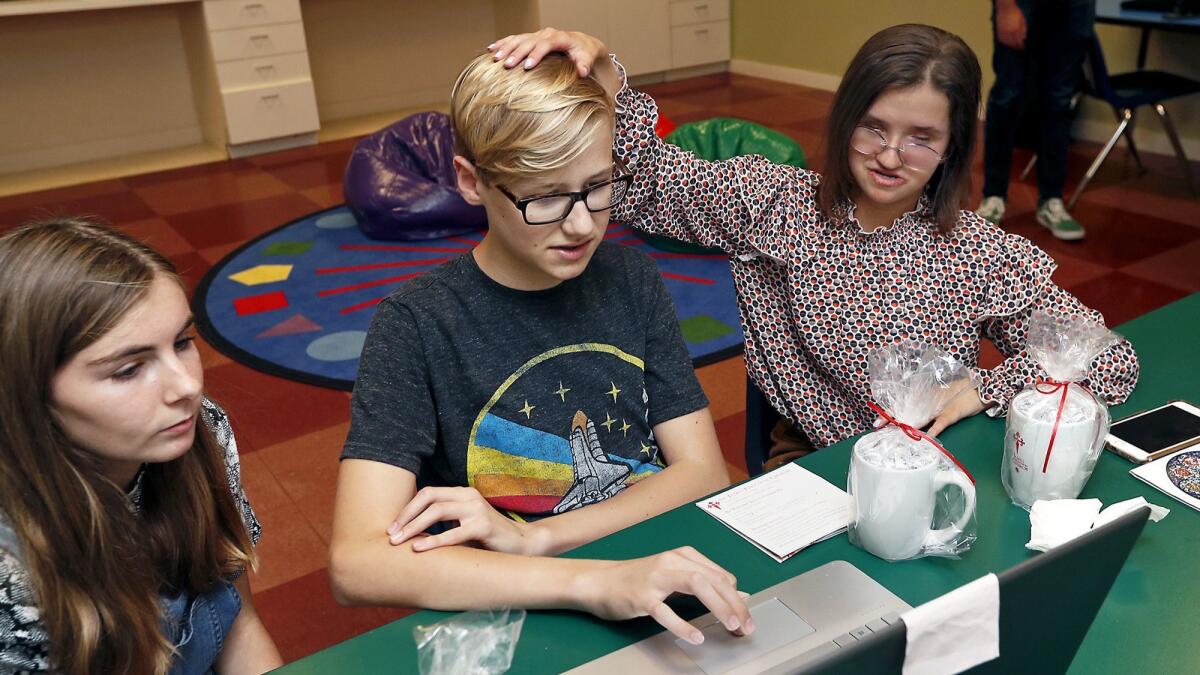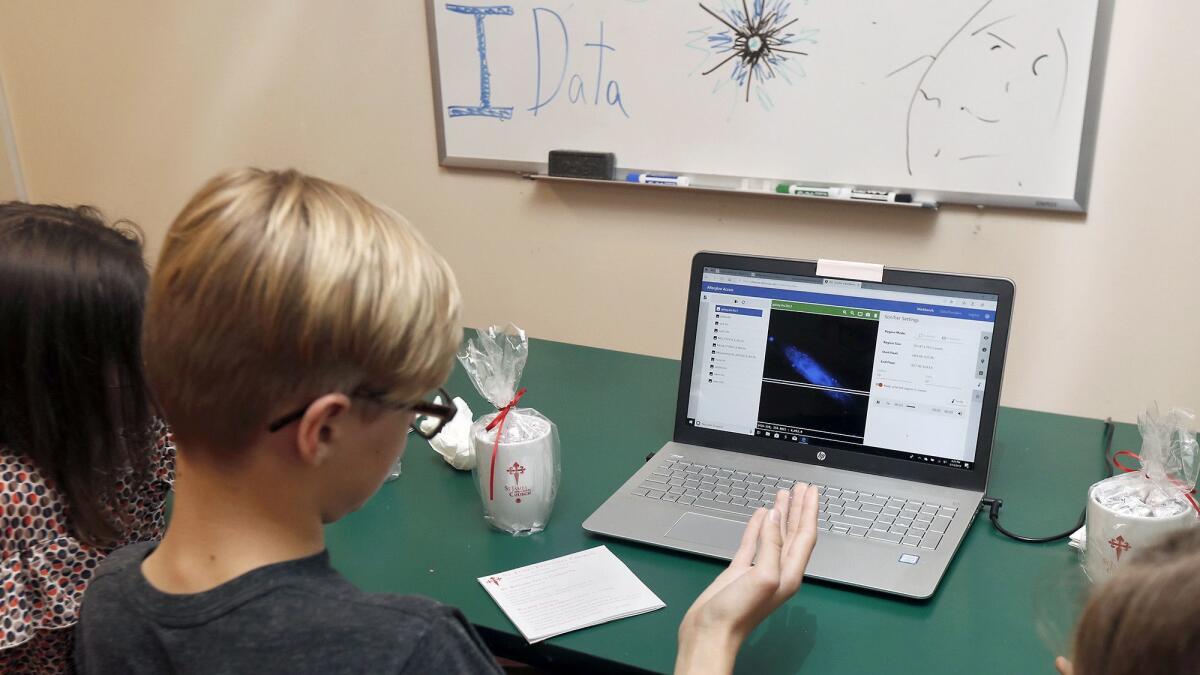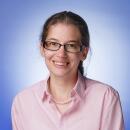Newport class makes astronomy accessible to visually impaired

- Share via
The vastness of the universe is in the palms of teenagers’ hands — all the more significantly for Lucie Courtois.
Courtois, 18, is visually impaired. She and two friends with normal vision huddled this week around a laptop that, fed with code in the Quorum programming language, directs telescopes in Chile to capture images of asteroids.
Quorum is simplified for blind users of screen-reader technology. The images the telescopes at the Cerro Tololo Observatory capture using its commands will be run through specialized software that converts the data points into sounds.
Astronomers, computer scientists, software engineers, high school students and their teachers are piloting Quorum and the Afterglow Access software to make typically visual astronomy applications accessible for blind and visually impaired people through a nationwide project called IDATA, or Innovators Developing Accessible Tools for Astronomy.
That draws Courtois, a junior at Corona del Mar High School, and Abby Gordon and Cooper Hubbard, freshmen at Edison High in Huntington Beach, to a classroom at St. James Episcopal Church in Newport Beach to be part of the discovery.
Abby, 15, runs pictures of an asteroid and the surface of Earth’s moon through Afterglow Access to demonstrate its musical chiming.
“It gets louder as it gets brighter,” she said. “I didn’t think you could listen to a picture.”
They also can feel space imagery. On a nearby table are plastic tiles with the Whirlpool Galaxy in relief, created with a 3-D printer in teacher Barbara Stachelski’s classroom at a Tustin middle school where she teaches special education by day, before the weekly late-afternoon class at St. James.
The galaxy’s nucleus and star factories are rounded bumps and the largest stars are distinct pin heads. A sighted person can see the spiral arms. A blind person touches them, processing the bumps and pins like the raised dots in a Braille book.

Stachelski, a St. James parishioner and Sunday school teacher, is part of a team that received a National Science Foundation grant two years ago to teach astronomy to visually impaired and fully sighted students.
Last summer she took two of her astronomy students to IDATA program headquarters in Wisconsin to meet teachers, students, astronomers and programmers from around the world to learn and plan sessions for this year. She expanded her program to Newport Beach in the fall, housing it in a St. James Sunday school classroom open to all.
Cooper, 14, started programming in the C++ language in seventh grade but had memorized the solar system much earlier, around kindergarten. He said he enjoys astronomy and wants other people to enjoy it too.
Hearing light and touching representations of stars millions of light years away are “other ways of doing it,” Courtois said.
All the latest on Orange County from Orange County.
Get our free TimesOC newsletter.
You may occasionally receive promotional content from the Daily Pilot.










